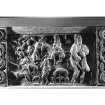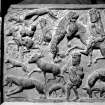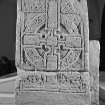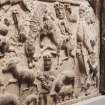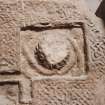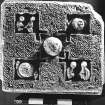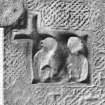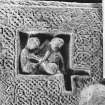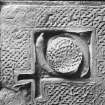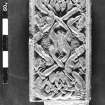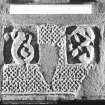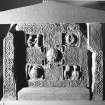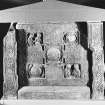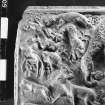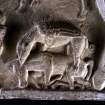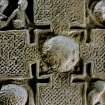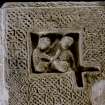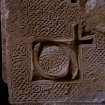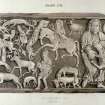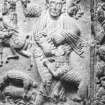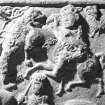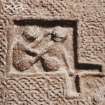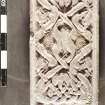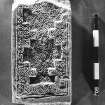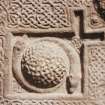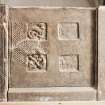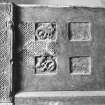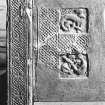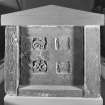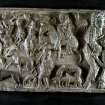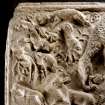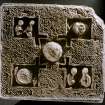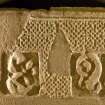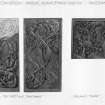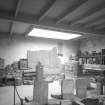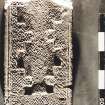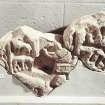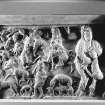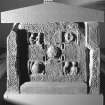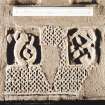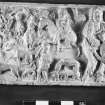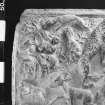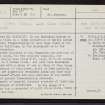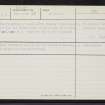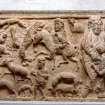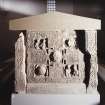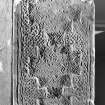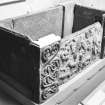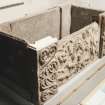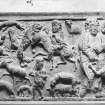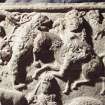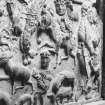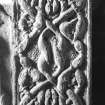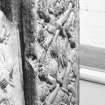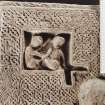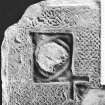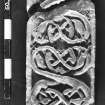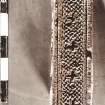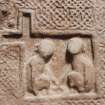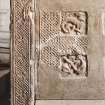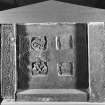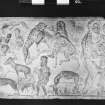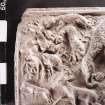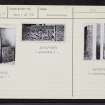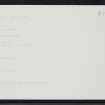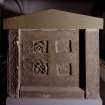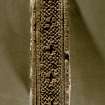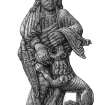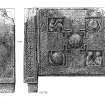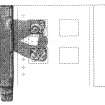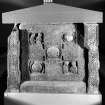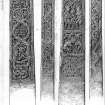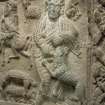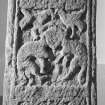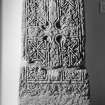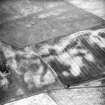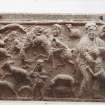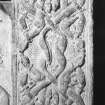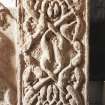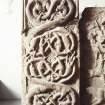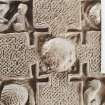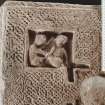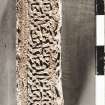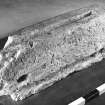St Andrews Cathedral, Museum
Cross(S) (Period Unassigned), Cross Slab (Early Medieval), Sarcophagus (Early Medieval)
Site Name St Andrews Cathedral, Museum
Classification Cross(S) (Period Unassigned), Cross Slab (Early Medieval), Sarcophagus (Early Medieval)
Alternative Name(s) Kirkheugh; Church Of St Mary Of The Rock
Canmore ID 34307
Site Number NO51NW 23
NGR NO 5142 1662
Datum OSGB36 - NGR
Permalink http://canmore.org.uk/site/34307
First 100 images shown. See the Collections panel (below) for a link to all digital images.
- Council Fife
- Parish St Andrews And St Leonards
- Former Region Fife
- Former District North East Fife
- Former County Fife
NO51NW 23 5142 1662
For museum building see NO51NW 2.07.
See also NO51NW 7.
(Centred NO 5142 1662) In the Cathedral Museum of St Andrews there is a large collection of Celtic carved stones, mostly fragmentary, which have been found in the walls of the buildings, in the churchyard or in the immediate vicinity.
"The great majority of the fragments are portions of erect grave slabs, the few complete examples, now fractured, having been about 4ft high, 18 to 20 inches wide and 4 to 6 inches thick. All have been decorated on both faces with a cross of one or other of four types and with designs of interlaced, plait or fret patterns. A few are apparently recumbent slabs and bear only incised crosses". (There are also portions of the shafts and heads of several free-standing crosses). An example of special interest consists of "portions of a sarcophagus or altar-tomb in the shape of a rectangular box constructed of eight stone slabs, three of which are missing.
The tomb measures 5 feet 9 inches long, by 2 feet 11 inches wide, by 2 feet 4 inches high. Each long side has been composed of three slabs, that in the middle (which is the largest), fitting into a groove in each of the other two. On the one side which is complete the large central slab is filled mainly with hunting scenes, the upper left hand corner having a background of foliage after a fashion familiar in such designs in the East. The end slabs bear an equal-armed cross and continuous plait work.
RCAHMS 1933; J R Allen and J Anderson 1903; J Stuart 1854
66 examples of Celtic sculptured stones are described in detail. All are said to have been found within 170 yards of the Cathedral Museum distributed as follows: 13 from the structure of the Cathedral, 2 from Abbey Wall, 12 in and about the church of St Mary of the Rock. The remainder came from the burial ground of the Cathedral. Seven of the cross slabs appear to be unique.
D H Fleming 1931
More than fifty fragments of small 8/9th century cross-slabs found in excavating the foundations of the church of St Mary of the Rock (NO51NW 7): they are now in the Cathedral Museum.
S Cruden 1950
Field Visit (29 May 1964)
The stones above described are all in the Cathedral Museum, but the exact number was not ascertained.
Visited by OS (WDJ) 29 May 1964.










































































































